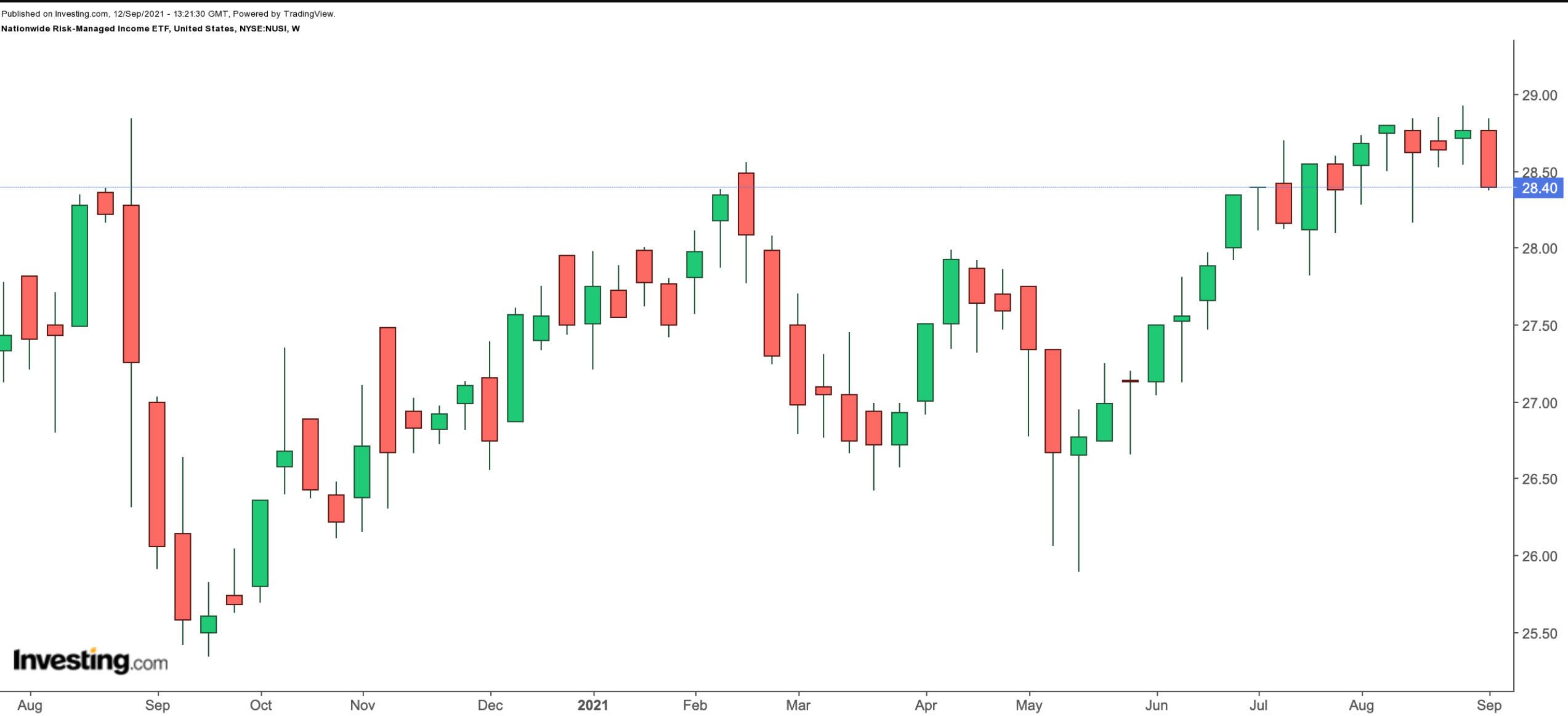Many stocks have been struggling in September. For instance, so far in the month, the Dow Jones Industrial Average, the S&P 500 as well as the tech-heavy NASDAQ 100 index are down around 2.2%, 2.0% and 1.1%, respectively.
As a result, investors are looking to hedge themselves against further declines. Today’s article, therefore, introduces two exchange-traded funds (ETFs) that could appeal to readers who believe further volatility and declines might be around the corner.
1. Invesco S&P 500 High Dividend Low Volatility ETF
- Current Price: $43.50
- 52-Week Range: $31.77 - $46.49
- Dividend Yield: 3.78%
- Expense Ratio: 0.30% per year
The Invesco S&P 500® High Dividend Low Volatility ETF (NYSE:SPHD) currently invests in 51 stocks in the S&P 500 Index that have high dividend yields and exhibit low volatility. The fund, which began trading in October 2012, is rebalanced and reconstituted semi-annually.

The leading 10 holdings comprise about 28% of net assets of almost $3 billion. Put another way, the ETF is not top-heavy and thus price changes in a given stock would not have much affect on the value of the fund.
Utilities have a 19.59% slice in SPHD. Next in line are consumer staples (19.20%), health care (10.78%) and real estate (8.82%) stocks.
Record storage and information management company Iron Mountain (NYSE:IRM); tobacco group Altria (NYSE:MO), which owns Philip Morris USA; electricity utility PPL (NYSE:PPL); telecom giant AT&T (NYSE:T); and energy infrastructure group The Williams Companies (NYSE:WMB) lead the names on the roster.
So far in the year SPHD has returned close to 16% and hit a record high in May. Since then some of the names in the fund have come under pressure. Forward P/E and P/B ratios stand at 13.48x and 2.54x. Interested readers with a two- to three- year horizon could find around these levels.
2. Nationwide Risk-Managed Income ETF
- Current Price: $28.40
- 52-Week Range: $25.34 - $28.93
- Distribution Yield: 7.47%
- Expense Ratio: 0.68% per year
Today’s second ETF is the Nationwide Risk-Managed Income ETF (NYSE:NUSI). It began trading in December 2019, and assets under management are close to 390 million.
NUSI’s objective is generating income while reducing volatility and mitigating risk. Fund managers rely on dynamic options strategies, such as covered calls or protective puts, which we regularly discuss.

The ETF owns all the underlying stocks in the tech-heavy NASDAQ 100 as individual shares. Then fund managers write covered calls on the NASDAQ100 index and collect premium, which offers some downside protection in declining markets.
Strike prices for these covered calls are typically near at-the money (ATM) or slightly out-of-the-money (OTM). And expiry dates tend to be within one month. The ETF collects dividends from equity positions held as well.
NUSI’s 12-month distribution yield stands at 7.46%. Investors would have received this amount if they had held the ETF over that period. Fund managers regularly distribute part of the income derived from writing call options as well as the dividends collected.
Meanwhile, the ETF hedges the risk of large declines in underlying stocks by purchasing OTM protective puts on NASDAQ 100. This put position provides a “floor” on the value of shares in NUSI until the expiration of options.
Such a hedge would especially kick in during a significant market downturn, similar to the one experienced in Q1 of last year at the start of the pandemic.
In other words, NUSI is a defensive net-credit (i.e., income) collar strategy, where both the upside and downside potential are limited. We might regard NUSI as a lower-risk lower-reward fund, say, when compared to the Invesco QQQ Trust (NASDAQ:QQQ), which returned about 20% in the past year. On the other hand, NUSI went up by 3.3% so far in the year.
Therefore, given the collar option strategy, NUSI cannot outperform a fund like QQQ in years when the NASDAQ 100 performs well. But if we have a significant downturn in the index, NUSI would not see as much volatility, either.
Such a fund could be suitable for investors expecting selling pressure soon. NUSI could also appeal to income-focused investors, such as retirees.
